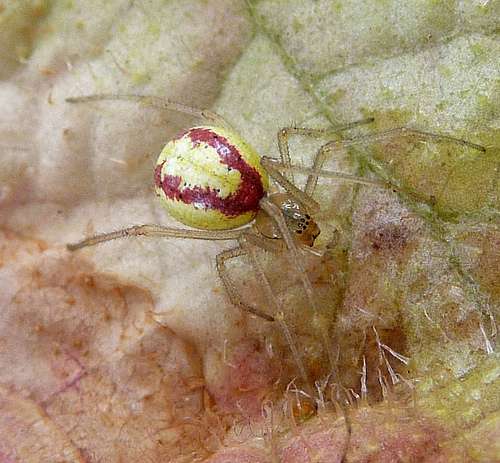Finding mates using electric signals. Credit: Derek Ramsey, CC BY
Most animals use touch, smell, hearing, taste and sight to identify and attract a mate (that goes for humans too). But some species have additional and unusual weapons in their sexual armoury – the ability to sense vibrations and electric signals which indicate that a similar creature is in the vicinity.
Of course, it takes one to know one – and these signals are usually invisible to other species that don't possess the requisite receptors needed to pick up on these vibrations and signals. So while some electric fish have specialised cells to send and receive messages to members of their own species, other fish remain oblivious to this secret courtship within their neighbourhood.
But while this is usually an advantage, sometimes these secret courting signals can be picked up on by predators.
Ghost knifefish and electric sex
The ghost knifefish, native to freshwaters of South America, are quite unusual. They have developed a unique way of finding mates in dark, turbid waters where their vision may be compromised: they communicate with each other using electricity.
Brown ghost knifefish (Apteronotus leptorhynchus) have a specialised electric organ in their tail that generates a signal called Electric Organ Discharge (EOD). One fish produces an electric field to send a message, and the receiver uses electroreceptors distributed over its skin to interpret the signal. The frequency and waveform of the message give it a unique code that conveys recognition, aggression, location of food, warnings of danger, and in some cases, even courtship.
Tangle-web spiders use the leafhopper’s sexual vibrational signals to locate and kill them. Credit: JamesKLindsey and gailhampshire, CC BY
Male and female knifefish recognise each other from their unique EOD frequencies (EODfs). Males produce higher-frequency signals in the range of 800-1100 Hz, whereas females emit signals in the range of 600-800 Hz.
EODfs do more than just help these fish identify the opposite sex. They may even be indicators of "male quality". Female knifefish generally prefer males with high EODfs, perhaps because they tend to have larger bodies and gain precedence over others while competing for limited resources like food.
Rüdiger Krahe of McGill University is an expert on communication in weakly electric fish and has recently demonstrated how environmental changes can manipulate mating behaviour in ghost knifefish. In his experiment, male and female fish were housed in the same aquarium for a month, during which researchers simulated breeding conditions within the aquarium by imitating a rainy environment – knifefish prefer to breed in the rainy season. They recorded the electric signals produced by the fish using electrodes placed on the fish and in the water. They found that in the rainy environment, males increased their EODfs, most likely to attract females.
The same team also performed a second experiment in which they housed one group of male knifefish in isolation and a second group surrounded by other male and female knifefish. The males housed in a social environment had higher EODfs. Thus, ghost knifefish not only use electric signals to find their partners but also are capable of continuously adjusting the nature of these signals according to changing environmental conditions.
Killed by vibrations
Some species of insects recognise their own kind with vibrations that convey specific information. The male leafhopper, for instance, transmits low-frequency vibrations through plants to recognise, locate and approach females. The insects possess specialised receptor cells in their legs to detect acoustic mating signals. However, unlike electric signals, these vibrational signals sometimes stand out from background noise and can therefore be intercepted by predators.
Tangle-web spiders prey on leafhoppers – and scientists at Cardiff University have shown that they locate their prey by exploiting the leafhopper's sexual vibrational signals. In the study, spiders were placed on a plant and exposed to recordings of the leafhopper's mating calls, generated using a vibrating device attached to the plant. These signals were adjusted to match the amplitude and frequency of the leafhopper's natural calls.
The researchers found that the spiders changed their behaviour in response to different signals. In the presence of such vibrations, the spiders spent more time on the plant and began to display typical foraging behaviour. They started to make their way towards the vibrating leaf, probably because they thought it was a source of food. This directed movement was only observed in the presence of the male calling signal. The authors postulate that since male vibrational calls are more conspicuous and have higher amplitudes (that is, stronger vibrations) than female calls, spider foraging behaviour may be influenced by the difference. Wolf spiders that do not prey on leafhoppers remained unaffected by the insect's vibrational signals in this experiment.
Vibrational signalling in animals has been well documented, but this is the first evidence for its use in predator-prey relationships. It is likely that there are other predators that intercept sexual vibrational cues to locate and capture their prey, and that this tactic is an unrecognised driver of evolution in many invertebrates.
Source: The Conversation
This story is published courtesy of The Conversation (under Creative Commons-Attribution/No derivatives).
![]()






















